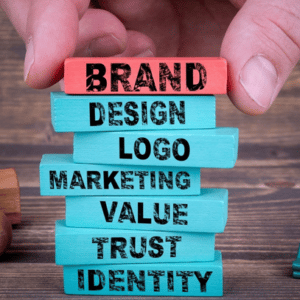In an era where hashtags wield power and tweets carry weight, it’s no secret that social media has become the beating heart of modern business strategies. From the bustling streets of New York City to the serene lawns of suburban neighborhoods, businesses of all shapes and sizes are harnessing the digital megaphone that is social media to amplify their voices and connect with their audiences like never before.
But amidst the cacophony of tweets and posts, why should your friendly neighborhood lawn mower dealership bother to join the digital party? Ah, dear reader, allow us to mow down the skepticism and sprinkle some fertilizer on your curiosity. For you see, in the realm of lawn care and grassy endeavors, social media isn’t just a tool—it’s a riding mower on steroids.
In this verdant journey through the digital landscape, we’ll traverse the emerald hills of Facebook, Instagram, and perhaps even venture into the untamed wilderness of TikTok (if we dare). But fear not, fellow landscapers, for we’ll be armed not with spades and shears but with knowledge, wit, and a dash of charm.
So, what precisely does this digital odyssey entail? Prepare to delve into the art of crafting captivating content, cultivating a verdant online community, and integrating social media seamlessly into your digital strategy. From the humble push mower to the mighty zero-turn, we’ll explore how to rev up your social media engine and steer your dealership towards greener pastures.
Buckle up, dear reader, for the grass is always greener where the Instagram filters are just right. Welcome to the wild world of social media for lawn mower dealerships.
Why Social Media for Lawn Mower Dealerships Matters
In the realm of lawn mower dealerships, where the scent of freshly cut grass mingles with the hum of engines, the importance of social media transcends mere trendiness—it’s a potent elixir for growth and success. Let’s unfurl the banner of understanding and delve into why social media is the secret fertilizer your dealership’s digital garden needs.
Increased Brand Visibility and Awareness
In a world where attention spans are as fleeting as a summer breeze, standing out amidst the noise is no easy feat. Enter social media, the proverbial megaphone that amplifies your dealership’s voice to reach far-flung corners of the digital landscape. By cultivating a vibrant presence across platforms like Facebook, Instagram, and Twitter, you’re not just mowing lawns—you’re mowing down barriers to visibility, ensuring that your brand’s colors are seen and recognized by all who tread upon the digital turf.
Direct Communication with Potential and Existing Customers
Gone are the days of smoke signals and carrier pigeons; in the digital age, communication is instant, direct, and delightfully interactive. Social media platforms serve as bustling town squares where customers can engage with your dealership in real-time, asking questions, seeking advice, or simply showering praise upon your latest riding mower model. By fostering this direct line of communication, you’re not just selling products—you’re cultivating relationships, one comment thread at a time.
Showcasing Products and Services
Picture this: a crisp autumn morning, the sun casting golden rays upon a sleek, zero-turn mower as it effortlessly glides across a sea of emerald green. Now imagine capturing that moment in all its glory and sharing it with the world via Instagram or Facebook. Social media isn’t just a platform for idle chatter—it’s a canvas upon which you can paint vivid portraits of your dealership’s products and services, enticing customers with tantalizing glimpses of the lawn-mowing utopia that awaits them.
Building Community and Loyalty
In the digital wilderness, where algorithms reign supreme and trends ebb and flow like the tides, community is the sturdy oak around which your dealership’s online presence can take root. By fostering a sense of belonging and camaraderie among your followers—whether through engaging content, exclusive promotions, or heartfelt interactions—you’re not just building a customer base; you’re nurturing a loyal tribe of lawn care enthusiasts who will sing your praises from the hilltops (or at least from their lawns).
In essence, social media for lawn mower dealerships isn’t just a tool—it’s the fertile soil from which growth, connection, and success can flourish. So grab your smartphone, dust off your keyboard, and prepare to embark on a digital journey that’s as thrilling as it is rewarding. The grass is greener where social media thrives, and your dealership is poised to reap the bountiful harvest.
Identifying the Best Social Media Platforms
In the sprawling landscape of social media, where each platform boasts its own unique terrain and ecosystem, choosing the right channels for your lawn mower dealership can feel akin to navigating a labyrinth of options. Fear not, dear reader, for we shall be your digital cartographers, guiding you through the verdant valleys and towering peaks of the social media landscape to unearth the platforms best suited to your dealership’s needs.
Popular Platforms and Their Relevance to Lawn Mower Dealerships
-
Facebook
- The granddaddy of social media platforms, Facebook reigns supreme as a hub for connecting with customers, sharing updates, and fostering community engagement.
- Ideal for showcasing a wide range of products and services, sharing informative content, and hosting live events or Q&A sessions.
- Provides robust advertising options and targeting capabilities to reach specific audience segments.
-
Instagram
- A visual paradise where stunning imagery reigns supreme, Instagram is tailor-made for showcasing your dealership’s products in all their glory.
- Perfect for sharing eye-catching photos and videos of your lawn mowers in action, behind-the-scenes glimpses of dealership life, and customer testimonials.
- Offers interactive features like Stories, Reels, and IGTV to keep followers engaged and entertained.
-
YouTube
- The undisputed king of video content, YouTube offers a platform for sharing in-depth product demonstrations, tutorials, and customer testimonials.
- Ideal for reaching a broader audience and establishing your dealership as a trusted authority in the world of lawn care.
- Provides opportunities for monetization and collaboration with influencers or industry partners.
-
TikTok (if applicable)
- A rising star in the social media universe, TikTok offers a playful and creative platform for reaching younger, trend-savvy audiences.
- Perfect for showcasing your dealership’s personality, participating in viral challenges, and creating engaging short-form content.
- Requires a willingness to embrace trends and experiment with creative storytelling techniques.
Target Audience Demographics and Platform Preferences
Before setting sail on the social media seas, it’s crucial to understand the demographics and preferences of your target audience. Are they avid Facebook users, scrolling through their news feeds during leisurely Sunday afternoons? Do they flock to Instagram for their daily dose of visual inspiration? By aligning your platform choices with the preferences of your audience, you can ensure that your content resonates with the right people in the right places. Learn how to ultilize buyer personas for targeting.
Choosing the Platforms That Align with Dealership Goals and Resources
Armed with insights into the strengths and nuances of each platform, it’s time to weigh the options and choose the ones that align most closely with your dealership’s goals and resources. Are you seeking to increase brand awareness and engagement? Facebook and Instagram might be your go-to choices. Are you eager to dive into the world of video content and establish your dealership as an industry leader? YouTube could be your ticket to success. By carefully considering your objectives, audience preferences, and available resources, you can chart a course towards social media success that’s as strategic as it is rewarding.
Crafting Compelling Social Media Content
In the bustling marketplace of social media, where attention spans are fleeting and thumbs are ever-scrolling, the key to capturing hearts, minds, and double-taps lies in the art of crafting compelling content. From stunning visuals to educational nuggets of wisdom, let us unravel the threads of creativity and innovation that will transform your lawn mower dealership’s social media presence from mere noise to melodious symphony.
Visual Content Creation
- High-Quality Images and Videos of Lawn Mowers in Action
- Set the stage for awe and admiration with crisp, high-resolution images and videos that showcase your dealership’s fleet of lawn mowers in all their glory.
- Capture the thrill of the ride as your mowers glide effortlessly across lush green lawns, leaving behind a trail of perfectly manicured perfection.
- Behind-the-Scenes Glimpses of Dealership Operations
- Peel back the curtain and invite your followers into the inner sanctum of your dealership with behind-the-scenes glimpses of operations, maintenance, and camaraderie.
- Showcase the dedication and expertise of your team as they fine-tune engines, perform precision tune-ups, and share moments of laughter and camaraderie.
Educational Content
- Tips for Lawn Maintenance and Care
- Arm your followers with the knowledge and expertise they need to cultivate envy-worthy lawns with a steady stream of tips, tricks, and best practices for lawn maintenance and care.
- Share insights on watering schedules, fertilization techniques, and seasonal lawn care rituals to empower your audience to become masters of their own turf.
- How-to Guides for Selecting the Right Mower
- Navigate the maze of options with confidence and clarity by offering comprehensive how-to guides for selecting the right mower for every lawn and budget.
- Break down the features, benefits, and considerations of different mower types—from push mowers to zero-turn wonders—to help your audience make informed purchasing decisions.
User-Generated Content
- Encouraging Customers to Share Their Experiences with Your Products
- Harness the power of word-of-mouth marketing by encouraging satisfied customers to share their experiences, photos, and videos of your products in action.
- Create opportunities for engagement and community-building by featuring user-generated content prominently on your social media channels, celebrating the successes and stories of your loyal customers.
- Repurposing Customer Testimonials and Reviews
- Transform praise into persuasion by repurposing customer testimonials and reviews into engaging social media content.
- Showcase glowing reviews, star ratings, and heartfelt testimonials in visually appealing formats that capture attention and build trust with prospective customers.
Engaging with Trending Topics
- Incorporating Relevant Trending Topics and Challenges
- Ride the wave of viral trends and challenges by incorporating relevant hashtags, themes, and memes into your social media content.
- Keep a finger on the pulse of popular culture and current events to ensure that your content remains timely, relatable, and share-worthy.
- Participating in Seasonal or Industry-Related Conversations
- Join the conversation and position your dealership as a thought leader within the industry by participating in seasonal or industry-related discussions and events.
- Share insights, tips, and trends that resonate with your audience’s interests and concerns, positioning your dealership as a trusted source of expertise and authority.
In the vast expanse of social media, where trends rise and fall like the tides, the key to standing out lies in the art of crafting compelling content that captivates, educates, and inspires. By embracing the principles of visual storytelling, educational empowerment, user engagement, and trend-savvy relevance, your lawn mower dealership can carve out a digital presence that leaves a lasting impression on hearts, minds, and news feeds alike.
Building a Social Media Community
In the bustling digital neighborhoods of social media, where followers flock and conversations flow like a lively garden party, the true magic lies not just in amassing numbers, but in nurturing a thriving community. Like a well-tended lawn, a vibrant social media community requires care, attention, and a sprinkling of goodwill. Let us unearth the secrets to cultivating a digital oasis where followers feel valued, engaged, and eager to return time and time again. Learn about customer engagement strategies.
Interacting with Followers through Comments, Likes, and Shares
In the bustling marketplace of social media, where attention spans are fleeting and thumbs are ever-scrolling, the key to capturing hearts, minds, and double-taps lies in the art of crafting compelling content. From stunning visuals to educational nuggets of wisdom, let us unravel the threads of creativity and innovation that will transform your lawn mower dealership’s social media presence from mere noise to melodious symphony.
Hosting Giveaways, Contests, and Promotions to Incentivize Engagement
Like a sprinkling of fertilizer on a lush green lawn, giveaways, contests, and promotions can breathe new life into your social media presence, enticing followers with the promise of excitement, anticipation, and perhaps even a sprinkling of luck. Whether you’re offering a chance to win a brand-new mower, hosting a photo contest for the best lawn transformation, or rewarding loyal followers with exclusive discounts and prizes, these interactive experiences serve as seeds of engagement that can blossom into lasting connections and brand advocacy.
Responding Promptly to Inquiries and Messages
In the digital wilderness, where algorithms reign supreme and trends ebb and flow like the tides, community is the sturdy oak around which your dealership’s online presence can take root. By fostering a sense of belonging and camaraderie among your followers—whether through engaging content, exclusive promotions, or heartfelt interactions—you’re not just building a customer base; you’re nurturing a loyal tribe of lawn care enthusiasts who will sing your praises from the hilltops (or at least from their lawns).
Cultivating a Positive and Supportive Online Environment
In the verdant garden of social media, where trolls lurk in the shadows and negativity can spread like weeds, cultivating a positive and supportive online environment is paramount. Set the tone for your digital community by leading with empathy, authenticity, and a genuine desire to uplift and inspire. Celebrate the successes and milestones of your followers, offer words of encouragement in times of need, and foster a culture of kindness and inclusivity that extends far beyond the confines of the digital realm.
In essence, building a social media community isn’t just about accumulating likes and followers—it’s about sowing the seeds of connection, cultivating relationships, and nurturing a thriving ecosystem of engagement, loyalty, and mutual respect. By embracing the principles of interaction, incentivization, responsiveness, and positivity, your lawn mower dealership can cultivate a digital community that’s as lush and vibrant as the lawns it serves.
Integrating Social Media into the Digital Strategy
In the digital landscape where every click, like, and share holds potential, integrating social media seamlessly into your dealership’s broader digital strategy isn’t just a savvy move—it’s a game-changing strategy that can propel your brand to new heights of success. Let’s delve into the blueprint for weaving social media into the fabric of your digital ecosystem, ensuring that every tweet, post, and story serves as a powerful cog in the well-oiled machine of your marketing efforts.
Aligning Social Media Efforts with Overall Marketing Objectives
Just as a well-tuned mower requires precision and alignment to operate at peak performance, so too must your social media efforts align seamlessly with your dealership’s overarching marketing objectives. Whether you’re seeking to increase brand awareness, drive sales, or foster customer loyalty, your social media strategy should serve as a complementary force that amplifies and enhances your broader marketing initiatives. By ensuring that your social media efforts are in lockstep with your dealership’s goals, you can maximize the impact of every tweet, post, and interaction.
Leveraging Social Media Insights and Analytics for Data-Driven Decisions
In the data-driven world of digital marketing, insights are the currency that fuels success. Fortunately, social media platforms offer a treasure trove of analytics and insights that can illuminate the path forward, providing valuable data on everything from audience demographics to engagement metrics. By harnessing the power of these insights, you can make informed decisions, refine your strategies, and optimize your content to better resonate with your audience. Whether it’s tweaking the timing of your posts, experimenting with different content formats, or targeting specific audience segments, let data be your guiding star in the ever-shifting seas of social media.
Cross-Promoting Social Media Channels on Other Marketing Channels
Just as a well-maintained lawn benefits from a variety of nutrients and fertilizers, so too does your dealership’s digital ecosystem thrive when channels work in harmony. Take advantage of every opportunity to cross-promote your social media channels on other marketing channels, whether it’s through email newsletters, website banners, or in-store signage. By creating a cohesive and interconnected web of touchpoints, you can amplify your reach, drive traffic to your social media profiles, and foster deeper engagement with your audience across multiple platforms.
Collaboration with Influencers and Industry Partners for Increased Reach
In the sprawling landscape of social media, where influencers reign supreme and partnerships abound, collaboration is the secret sauce that can elevate your dealership’s presence to new heights. Forge strategic partnerships with influencers, industry experts, and like-minded brands to tap into their established audiences and expand your reach. Whether it’s sponsoring a popular lawn care influencer’s content, co-hosting a virtual event with a complementary brand, or participating in a collaborative giveaway, collaboration offers a powerful opportunity to amplify your message, forge meaningful connections, and reach new audiences that may have previously been out of reach.
In essence, integrating social media into your dealership’s digital strategy isn’t just about adding another item to your to-do list—it’s about harnessing the full potential of these powerful platforms to amplify your message, engage your audience, and drive meaningful results. By aligning your efforts with overarching objectives, leveraging insights for data-driven decisions, cross-promoting across channels, and collaborating with influencers and partners, you can cultivate a digital ecosystem that’s as vibrant and thriving as the lawns you serve.
Measuring Success and Adjusting Strategies
In the ever-evolving landscape of social media, where trends shift like the wind and algorithms dance to their own rhythm, success isn’t just about reaching the summit—it’s about navigating the twists and turns of the journey with agility, insight, and resilience. Let’s unfurl the map to success and explore the essential strategies for measuring performance, adapting strategies, and steering your dealership towards digital triumph.
Key Performance Indicators (KPIs) for Measuring Social Media Success
Just as a compass guides a traveler through uncharted territory, key performance indicators (KPIs) serve as the guiding beacons that illuminate the path to success in the digital realm. From likes and shares to click-through rates and conversion rates, identifying the right KPIs for your dealership’s social media efforts is crucial for measuring progress, gauging effectiveness, and benchmarking performance against objectives. Whether you’re tracking brand awareness, engagement, or lead generation, align your KPIs with your overarching goals to ensure that every metric serves a purpose and provides actionable insights.
Regular Monitoring and Analysis of Engagement Metrics
In the dynamic world of social media, where trends wax and wane with the passing of each day, regular monitoring and analysis of engagement metrics are essential for staying ahead of the curve. Set aside time to review your social media analytics, examining metrics such as likes, comments, shares, and click-through rates to gauge the effectiveness of your content, identify emerging trends, and unearth opportunities for optimization. By keeping a finger on the pulse of your audience’s behavior and preferences, you can adapt your strategies in real-time, ensuring that your content remains relevant, resonant, and impactful.
Adapting Strategies Based on Performance Insights and Feedback
Just as a seasoned sailor adjusts the sails to navigate shifting winds, so too must your dealership adapt its social media strategies based on performance insights and feedback. Pay attention to what’s working—and what isn’t—and be willing to pivot, iterate, and experiment with new approaches to better align with audience preferences and objectives. Whether it’s refining your content strategy, adjusting your posting schedule, or exploring new formats and platforms, embrace a mindset of continuous improvement and evolution to stay ahead of the curve and remain competitive in the ever-changing landscape of social media.
Continuous Optimization for Better Results Over Time
In the quest for digital excellence, success is not a destination but a journey—a journey of continuous optimization, refinement, and growth. Treat your dealership’s social media efforts as a living, breathing organism that requires nurturing, care, and attention to thrive. Experiment with A/B testing, explore new tools and technologies, and solicit feedback from your audience to identify areas for improvement and innovation. By adopting a mindset of continuous optimization, you can unlock new opportunities, overcome challenges, and propel your dealership towards greater heights of success and achievement in the dynamic world of social media.
In essence, measuring success and adjusting strategies in the realm of social media isn’t just about tracking numbers—it’s about harnessing insights, embracing feedback, and embracing a mindset of agility and adaptability. By identifying key performance indicators, monitoring engagement metrics, adapting strategies based on insights and feedback, and continuously optimizing for better results over time, your dealership can chart a course towards digital success that’s as strategic as it is transformative.
Embracing the Evergreen Journey: Cultivating Digital Prosperity
As the sun sets on our exploration of the verdant landscapes of social media for lawn mower dealerships, we bid adieu not to an end, but to a new beginning—a beginning marked by promise, potential, and endless possibility. For in the realm of digital marketing, where algorithms pulse and trends ebb and flow like the tides, the journey is not a linear path but a winding road that stretches far beyond the horizon.
As we reflect on the insights gleaned and strategies uncovered, let us not view this as the conclusion of our adventure, but as the commencement of an evergreen journey—a journey of growth, discovery, and continuous evolution. Armed with the tools of knowledge, innovation, and resilience, your dealership stands poised to carve out a digital presence that resonates with hearts, minds, and lawns alike.
So, dear reader, let us venture forth with heads held high and hearts ablaze, embracing the challenges and opportunities that lie ahead with unwavering determination and boundless enthusiasm. For in the fertile soil of social media, where connections bloom and communities thrive, the grass is always greener where the seeds of digital prosperity are sown.
May your journey be fruitful, your strategies be agile, and your lawns be forever lush and vibrant. Here’s to the adventure that awaits—a journey of growth, discovery, and digital triumph. Let us embrace it with open arms and boundless optimism, for the future is bright, and the possibilities are endless.
Need some help with your social media strategy? Dealers Digital can help. Contact us now to get started!







